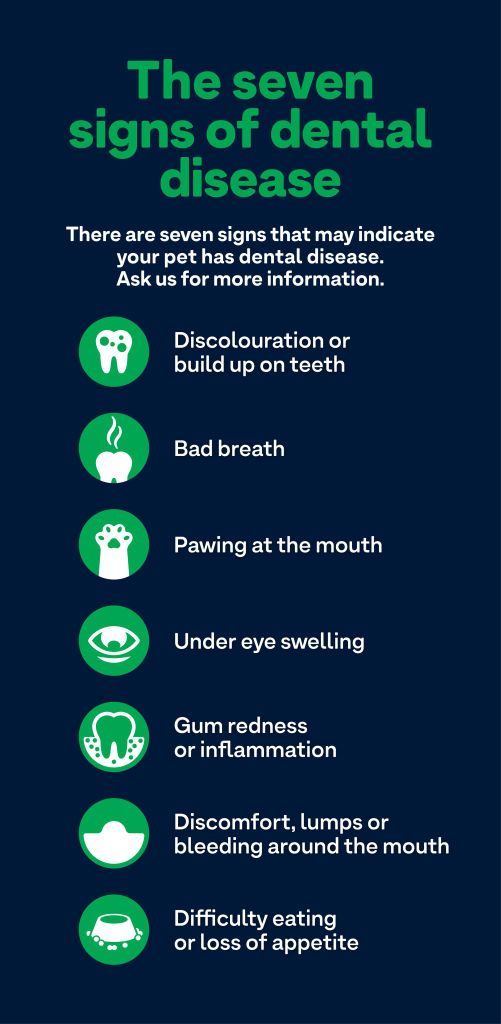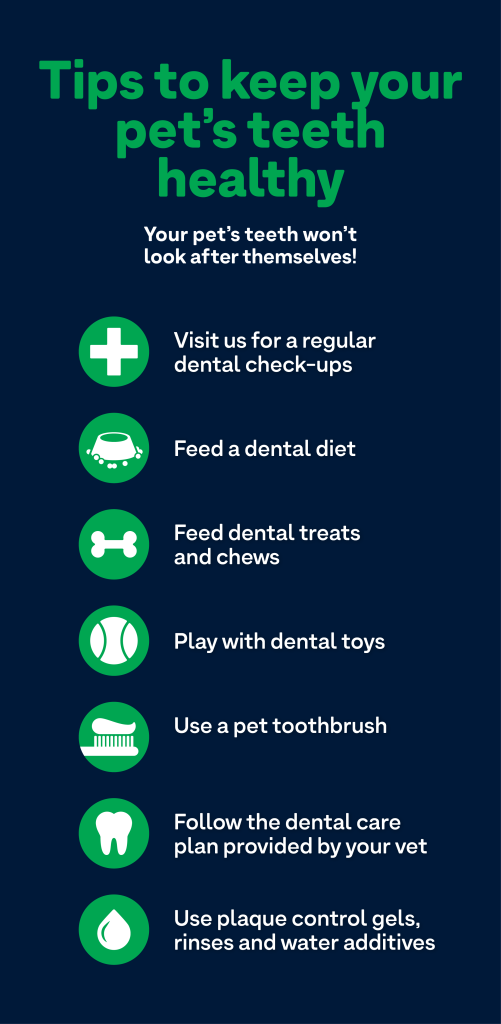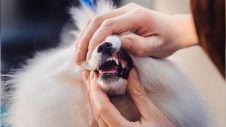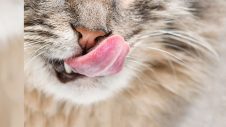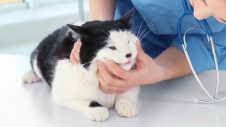Smelly pet breath isn’t normal
While many people believe that bad breath is normal for their furry friends, it can be an indication of a dental problem. Proper dental care for pets is critical to your pet’s overall health and wellbeing. Dental disease, if left untreated or undetected, can cause pain, discomfort and bacteria which could contribute to heart, liver, and kidney health problems.
The good news is, in most cases, dental disease is preventable with regular dental examinations and the appropriate ongoing dental care. There are things you can do at home to ensure your pet’s teeth are in top condition. Having a dental health check at your local Greencross Vets will give you and your pet a good starting point.
Book a dental check up with your local Greencross Vets team today.
What causes dental disease?
Dental disease is caused by the accumulation of plaque, which over time leads to tartar. Plaque is made up of food particles, saliva and bacteria, which sticks to the surface of the tooth and, if not removed, will calcify into tartar. Plaque is the furry feeling on your teeth when you haven’t brushed them.
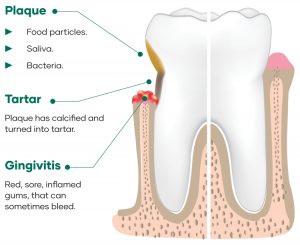 This build up occurs both above and below the gum line and over time can lead to gingivitis and the destruction of the supportive tissues of the teeth including the gums and bone, resulting in bad breath, oral pain and loss of teeth. Dental disease is painful for pets but they can’t tell us that it hurts. If left untreated, dental disease advances and can contribute heart, liver and kidney problems.
This build up occurs both above and below the gum line and over time can lead to gingivitis and the destruction of the supportive tissues of the teeth including the gums and bone, resulting in bad breath, oral pain and loss of teeth. Dental disease is painful for pets but they can’t tell us that it hurts. If left untreated, dental disease advances and can contribute heart, liver and kidney problems.
The good news is, in most cases, dental disease is preventable with regular dental examinations and the appropriate ongoing dental care by you and your veterinary care team at Greencross Vets.
We can help your pet have clean, healthy teeth and fresh breath! Book a dental check today.
Look out for these signs of dental disease, certain behavioural changes may indicate your pet needs extra care.
Regular vet checks will help to identify any development of dental disease and will allow your vet to discuss the best management plan for your pet. For adult cats and dogs with existing dental disease, a dental treatment with a scale and polish under general anaesthetic is necessary to remove the plaque and tartar build up and restore the teeth back to pearly white. Vets will also examine the teeth, they may take dental x-rays (radiographs) and will treat any diseased teeth. This will allow us to start preventative home-care measures with a clean mouth and prevent, or slow down, dental disease developing again in the future.
There are things you can do at home such as daily brushing, encouraging your pet to eat slowly, water additives and oral gels, premium dental and prescription dental diets with internationally approved dental claims that can significantly reduce the development of plaque or tartar. Some chewy treats are also specifically designed to reduce plaque or tartar, promote healthy gums and freshen breath. In July and August you can save on dental diets and treats, ask us for more information.
If your pet is calm and relaxed, daily brushing of their teeth with a specially designed pet toothbrush and pet toothpaste is also very beneficial. This is considered as the best method of removing plaque, just like it is for us!
Chat to your friendly Greencross Vets team today to learn more about dental care.
Our vets share some easy home tips to maintain your pets dental health
What’s involved in a dental procedure?
A dental scale and polish is sometimes required depending on the severity of dental disease present. This ensures the teeth can be cleaned properly and it can only be performed under general anaesthetic. This procedure includes a full examination including charting of the teeth. Your veterinarian may perform dental x-rays (radiographs) to view the roots of the teeth and other pathology which can help detect disease hidden under the gum-line. The teeth are then scaled (cleaned with a special instrument), both ultrasonically and by hand, and then finishing with a polish and special toothpaste. This procedure is similar to what we experience when we go to the dentist.
Just like your own dentist, we use particular dental instruments and pain relief including local nerve blocks to ensure your pet is safe and comfortable throughout the procedure.
For more information about how to keep your pet’s teeth healthy talk to your local Greencross Vets team.

 Greencross Vets
Greencross Vets 